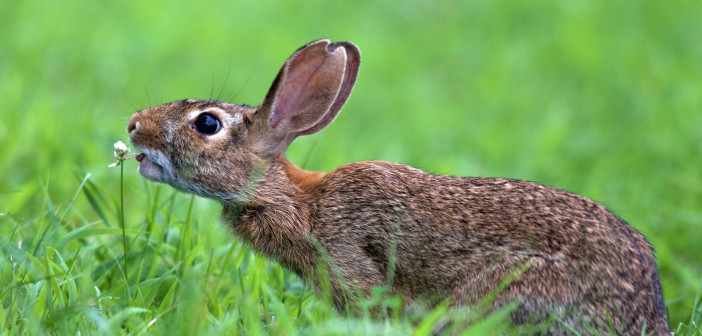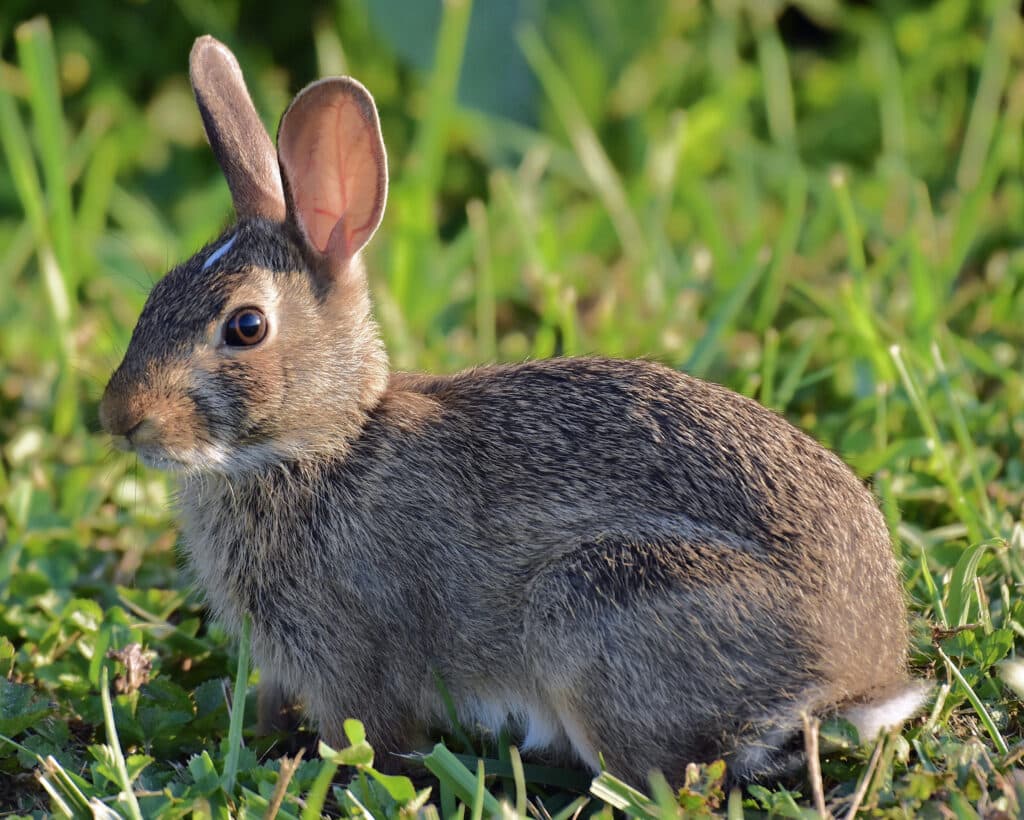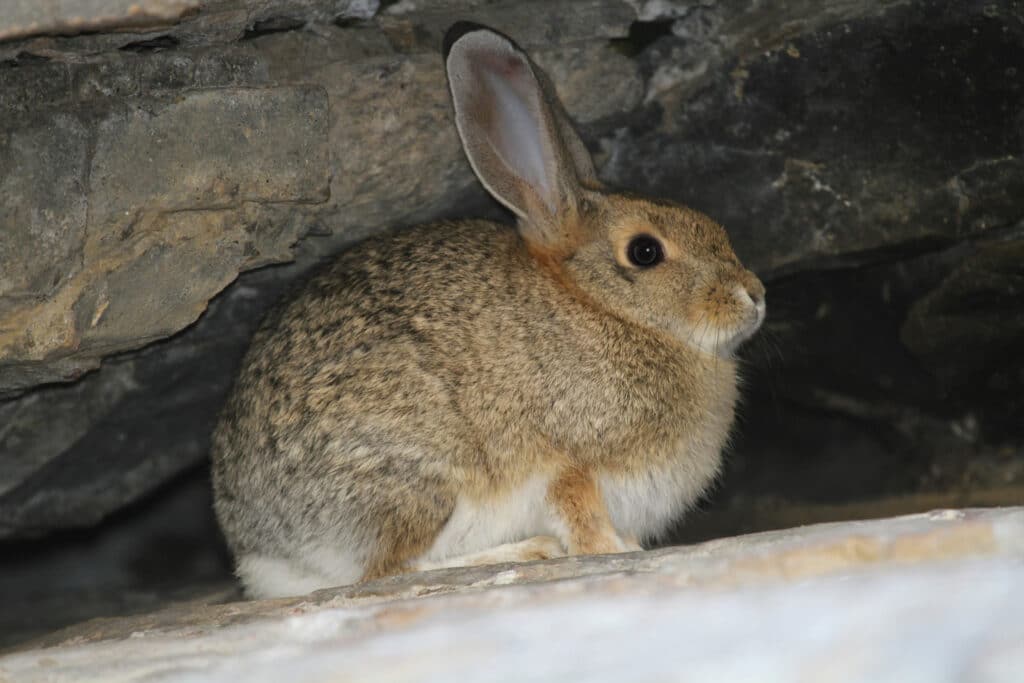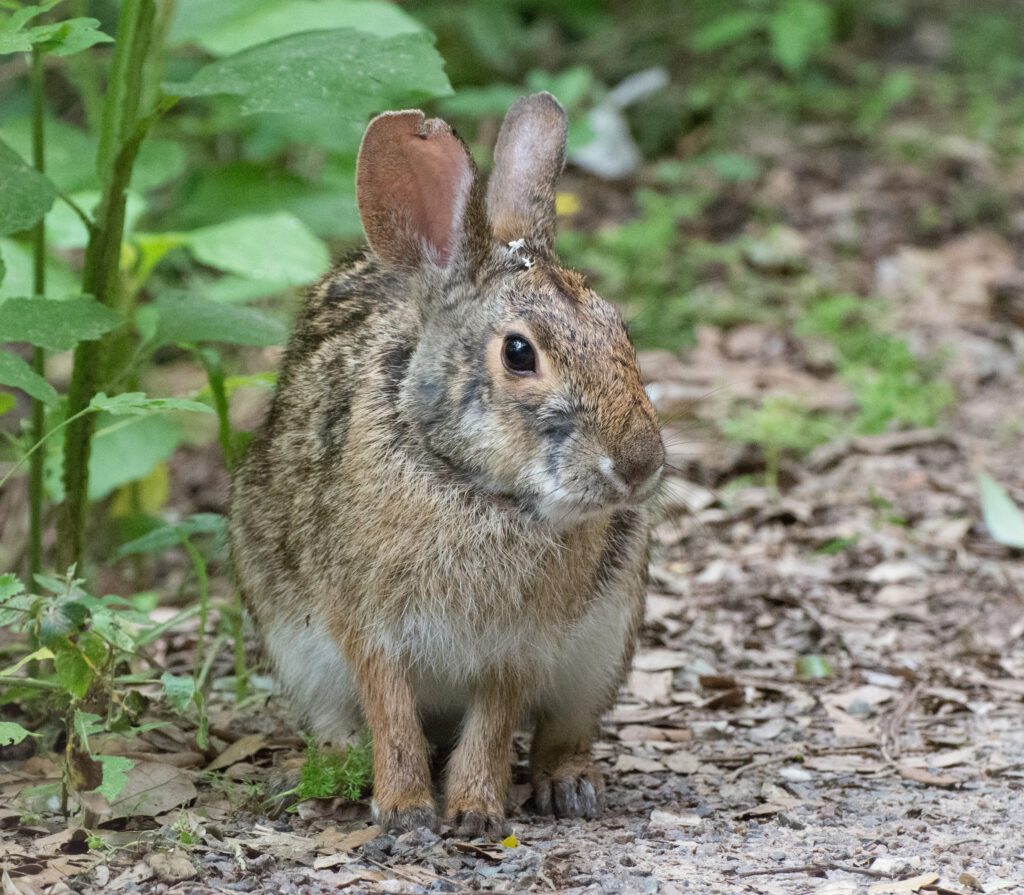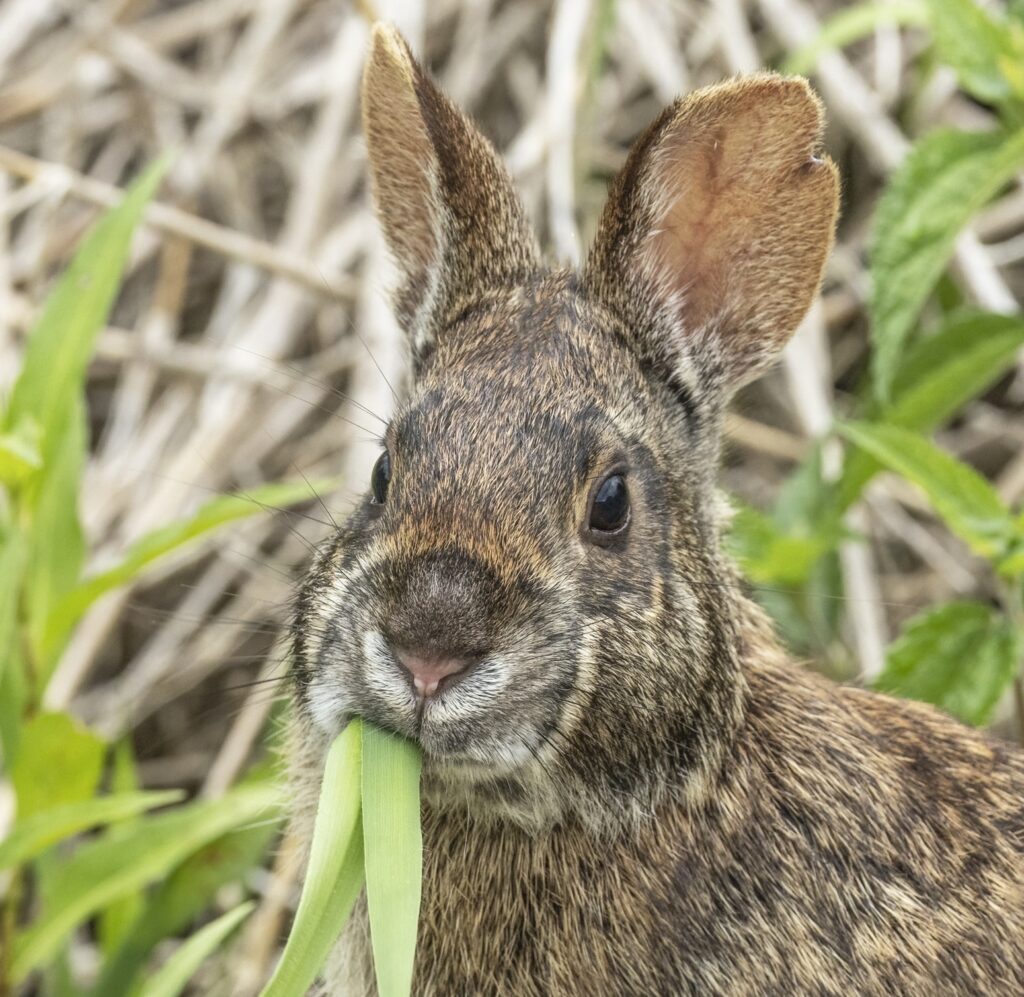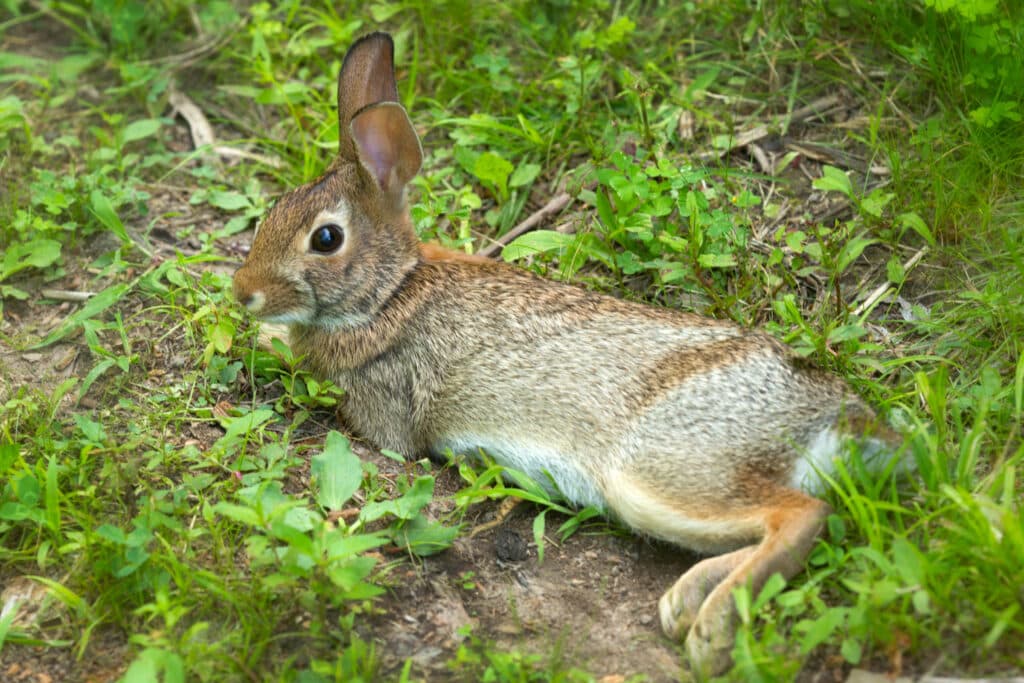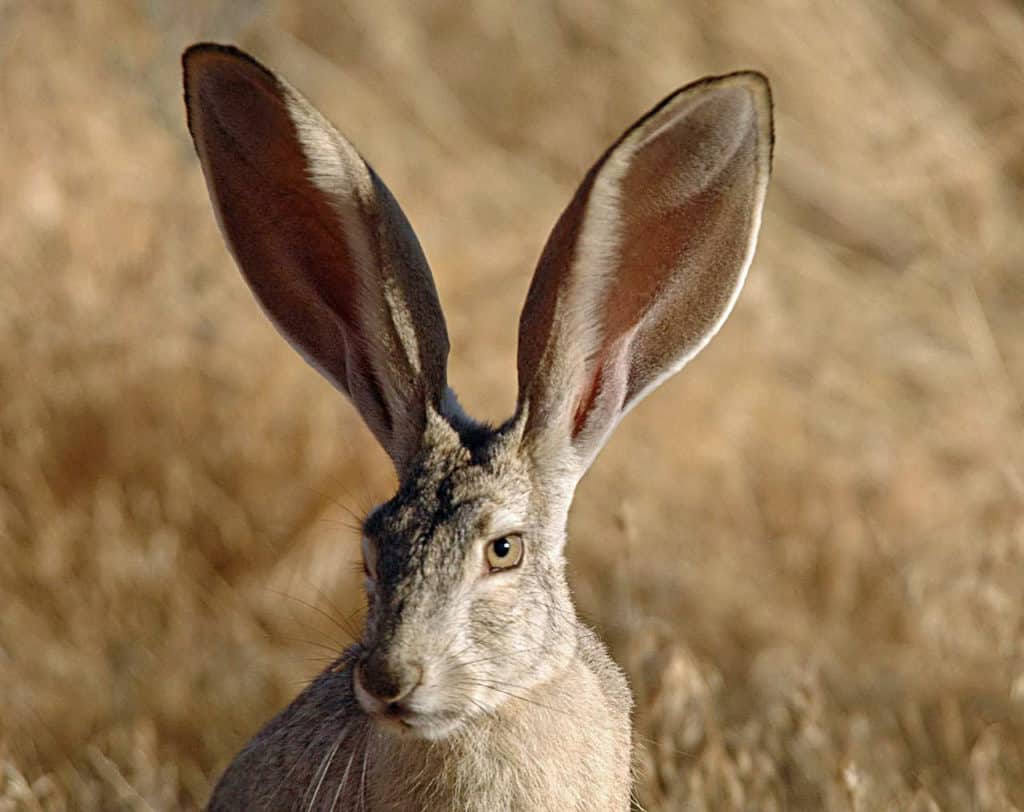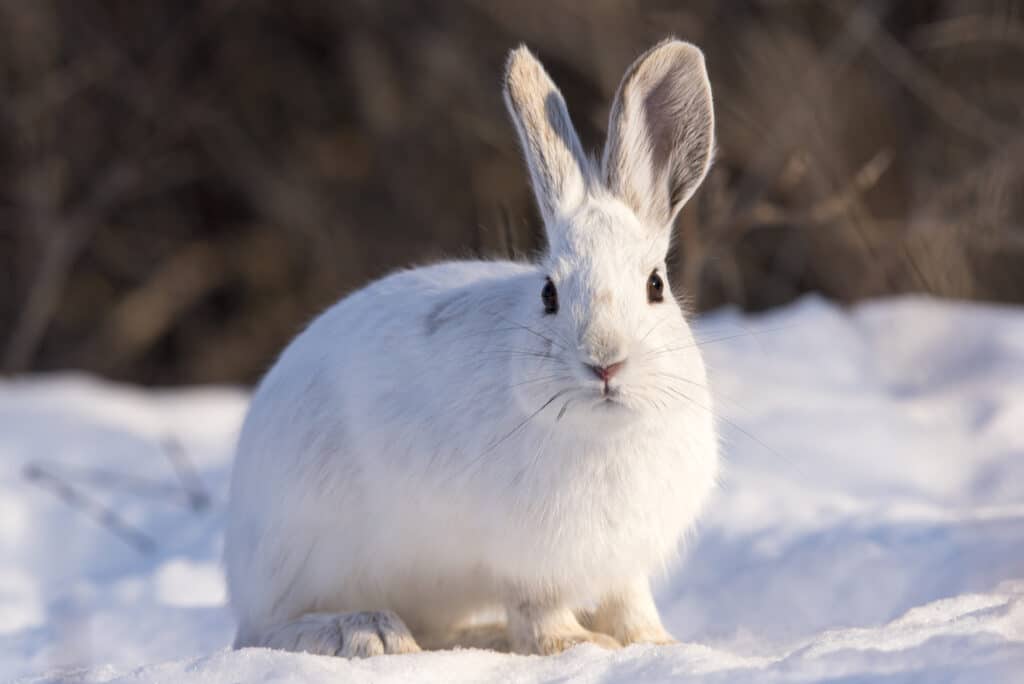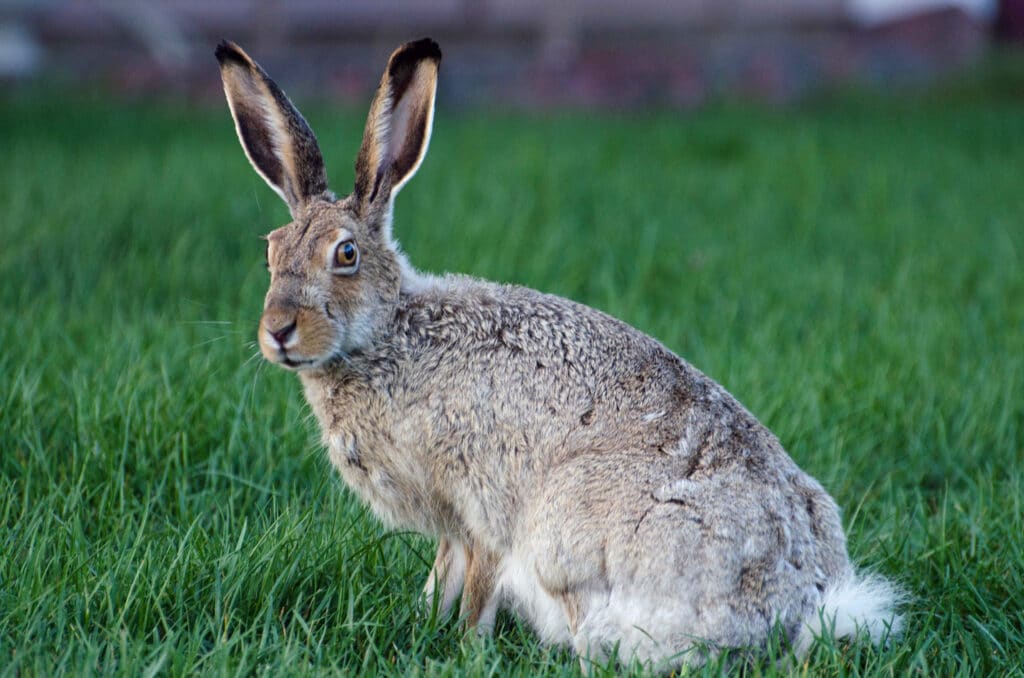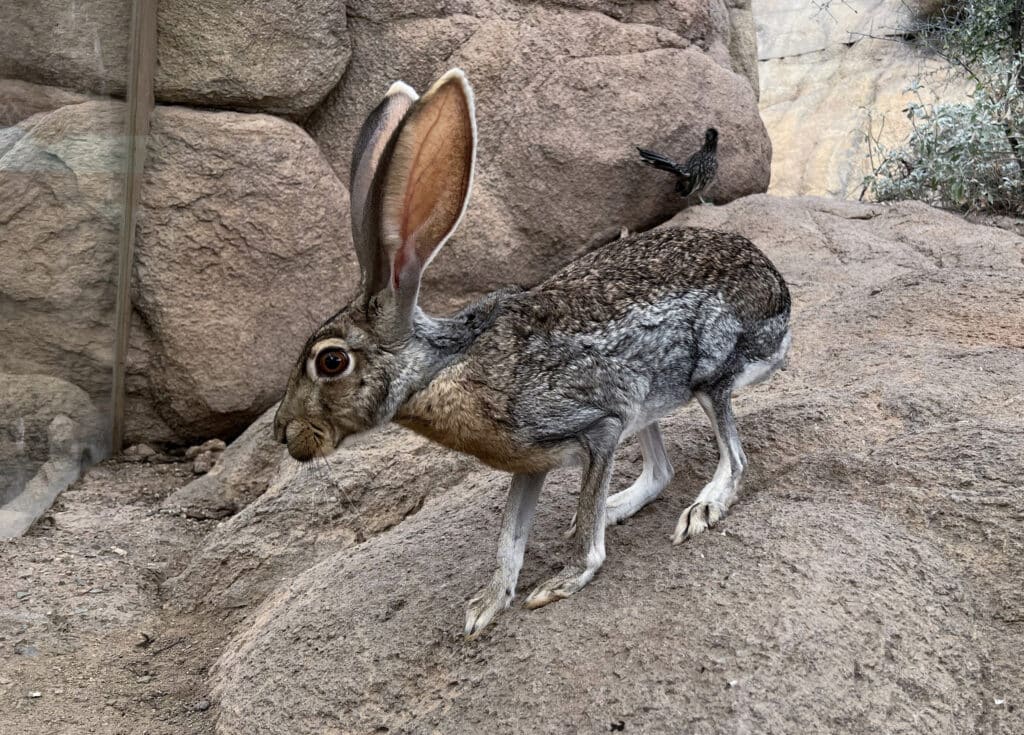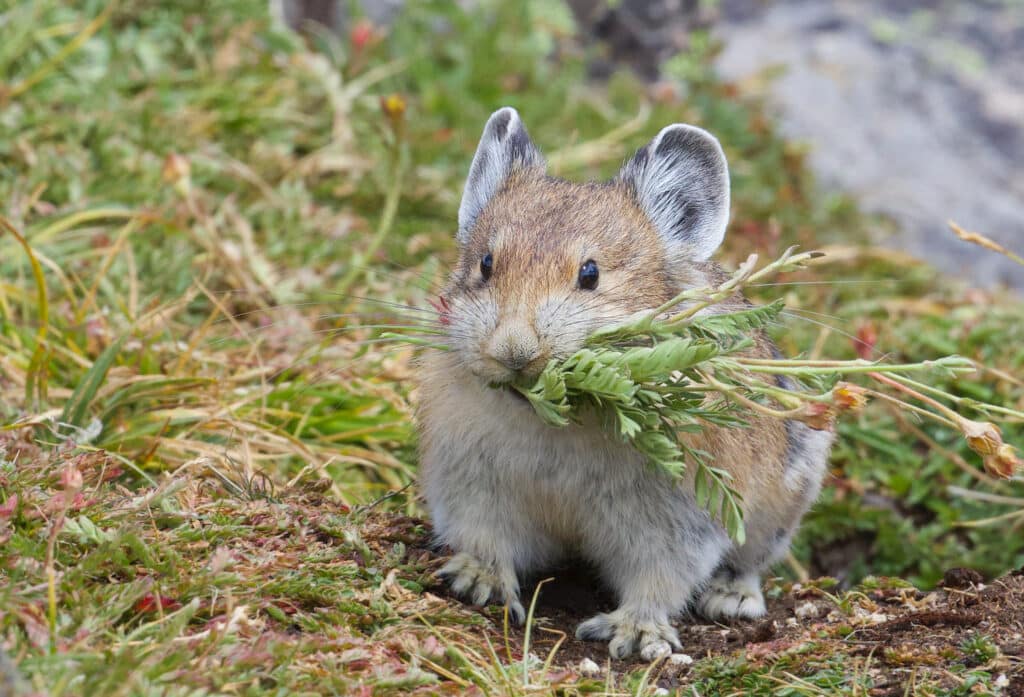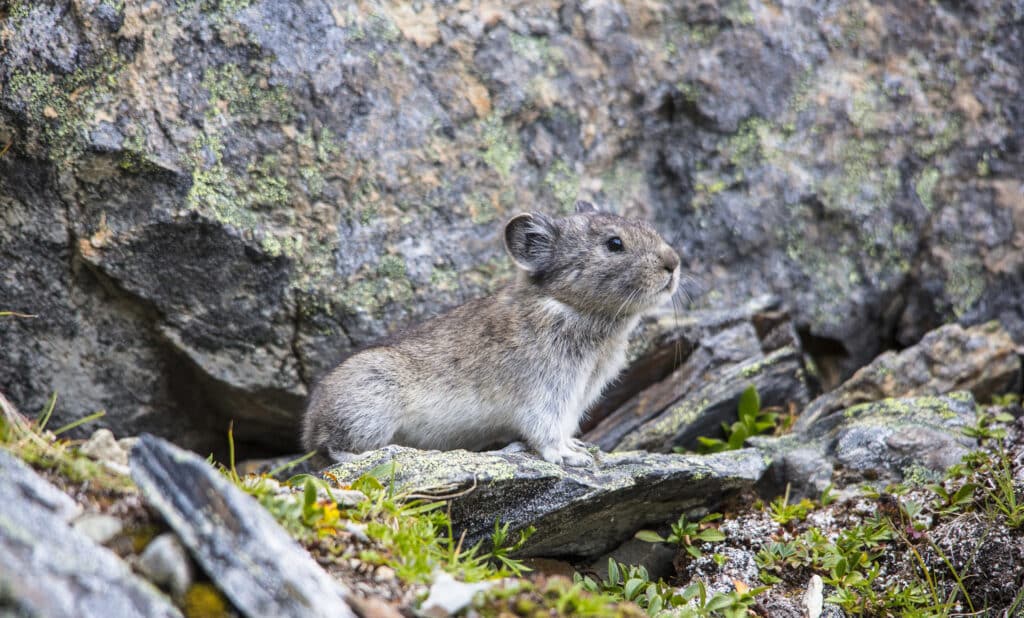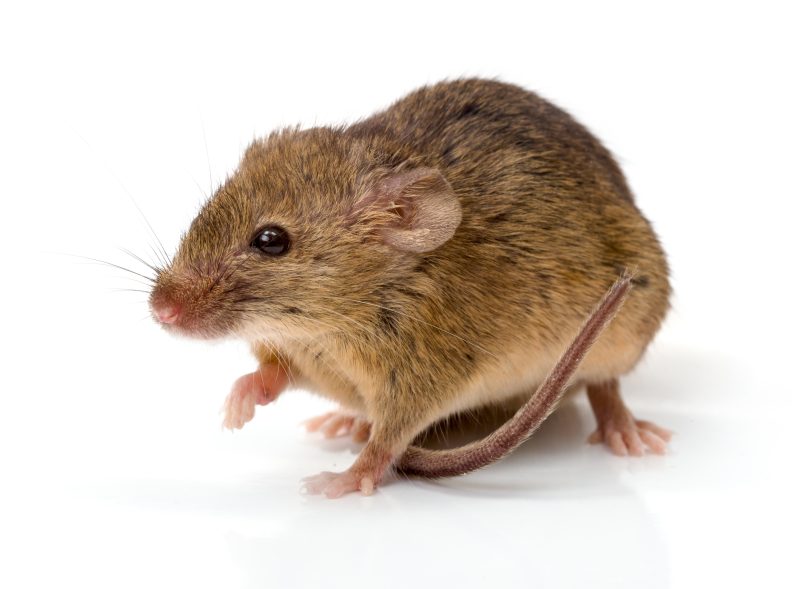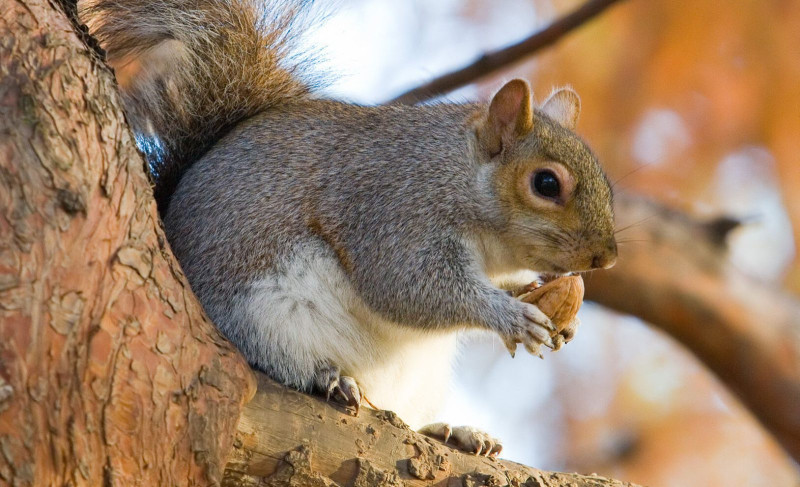Here’s a pictorial list of all the rabbits and hares in the U.S., along with something about each of them. One or more probably visit your yard. (Well, with pikas and Snowshoe Hares, maybe not so much, and you’ll see why!)
Do you enjoy watching rabbits or hares in your yard? It’s often a source of pleasure because it connects us with nature in a familiar and intimate setting. Their presence adds a touch of whimsy and charm to the everyday landscape, reminding us of the wonder and beauty of the natural world. Watching them hop about brings a sense of joy and tranquility, offering a moment of respite from the hustle and bustle of daily life. It may also evoke nostalgia, harkening back to childhood memories of storybooks and fairy tales. Their innocence and simplicity inspire a sense of wonder and appreciation for life’s simple pleasures, fostering a deeper connection to the world around us.
*(A note of special thanks to all the excellent photographers who generously permit their images to be used at no cost to enhance pages such as this.)
Introducing Lagomorphs: rabbits, hares, and pikas
The continental U.S. and Alaska have fifteen native species of rabbits and hares: eight cottontail rabbits, four hares (sometimes called jackrabbits), two pikas, and one rabbit that lacks a “cotton tail.” All belong to the order Lagomorpha. (Around the world, there are 109 species.) Several things distinguish them, but overall, rabbits are smaller in size than hares and have shorter legs and ears. They give birth to altricial young, meaning the babies are born hairless and helpless. Hares are larger with longer legs and ears and have adapted to life in open habitats like fields and grasslands. Hares typically give birth to precocial young, meaning the babies are born fully furred and with their eyes open, ready to move around shortly after birth. Pikas are small, with short limbs and little, round ears. Like cottontails, their young are born altricial.
Eastern Cottontail Rabbit, Sylvilagus floridanus
The most common U.S. rabbit, the Eastern Cottontail is ubiquitous from southern Canada throughout the eastern two-thirds of the U.S. to South America. This adaptable rabbit thrives in a variety of habitats, including forests, grasslands, and urban and suburban areas, favoring dense vegetation for cover and forage. They’re 14 to 19 inches (36–48 cm) long and weigh 2 to 4 pounds (0.9–1.8 kg). They have relatively short, rounded ears and a fluffy white tail that resembles a cotton ball, from which it derives its name. Its fur coloration varies, but it often features a mix of brown, gray, and reddish hues. One interesting behavior you may have noticed is their tendency to freeze when approached. Like all rabbits, they’re relying on their camouflage colors to evade detection. If forced to run, they’re fast: up to 18 miles per hour (29 kmh).
Brush Rabbit, Sylvilagus bachmani
The Brush Rabbit is a cottontail that typically inhabits brushy woodlands, chaparral, and coastal scrublands from southern British Columbia down to the Baja California Peninsula. It’s a petite 12 to 14 inches (30–36 cm) long and weighs 1 to 2 pounds (0.5–1 kg), with fur that’s typically grayish-brown with a lighter underbelly. Its tail lacks the typical white underside, having a pale gray one, instead. They have relatively large ears in proportion to their body size, which aids in their detection of potential predators in their dense brushy habitats. Like many other rabbits, it thumps its hind feet when sensing danger, which serves as a warning signal to nearby individuals.
Desert Cottontail Rabbit, Sylvilagus audubonii
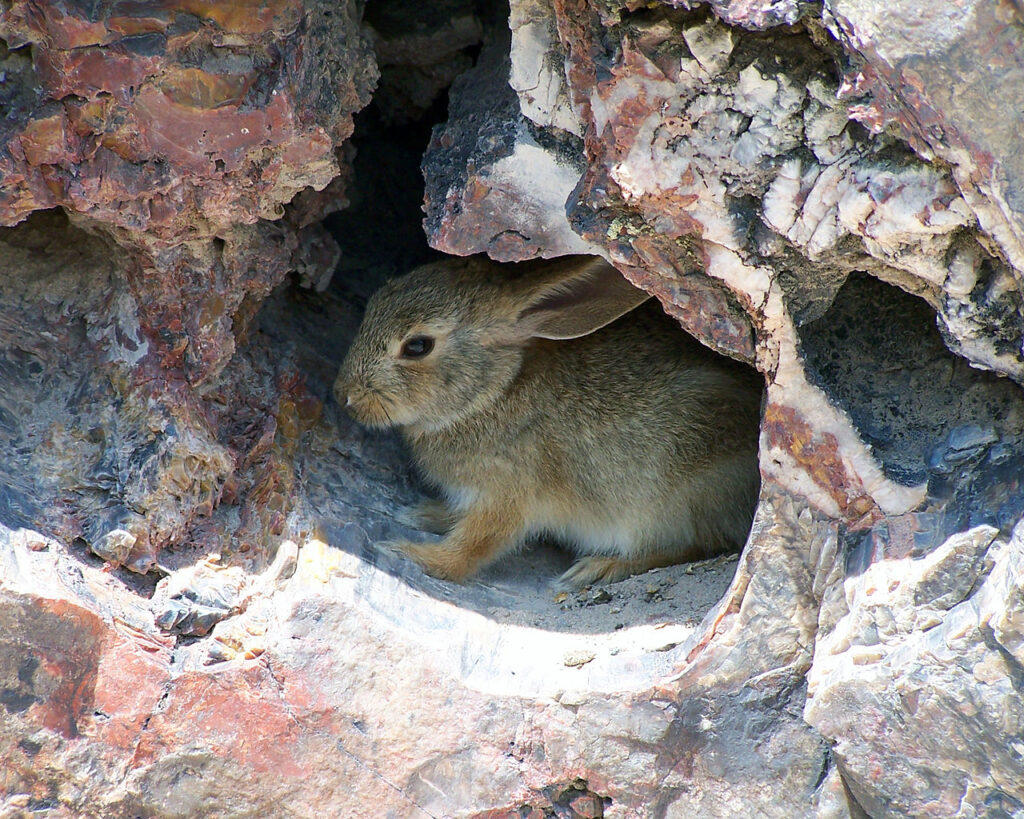
Desert Cottontail Rabbit, Sylvilagus audubonii (Park Ranger, Petrified Forest National Park; CC BY 2.0)
A prevalent rabbit that inhabits arid regions of the southwestern U.S. and Mexico, the Desert Cottontail thrives in scrublands, chaparral, and sandy dunes. It’s 14 to 17 inches (36–43 cm) long and weighs 1.5 to 3 pounds (0.7–1.4 kg), with sandy brown fur on its back and sides, a white belly, and a white cotton-like tail. It spends the day in the shade to avoid the intense heat and comes out in the early morning and evening. Despite facing threats such as habitat loss and predation, it’s relatively common throughout its range, owing to its adaptability to harsh desert environments.
Swamp Rabbit, Sylvilagus aquaticus
The Swamp Rabbit is a cottontail that inhabits the wetlands and swamps of the southeastern U.S., ranging from Texas to the Carolinas. It thrives in marshy ecosystems, where it can be found amidst cattails and reeds. At 17 to 22 inches (43–56 cm) in length and a weight of 2.5 to 4 pounds (1.1–1.8 kg), it’s noticeably larger than many other rabbits. Its fur is usually a rich brown or gray color, and coarse and dense, which provides insulation and protection in its wetland habitat. Its ears are relatively short compared to other rabbits, and it has a small, inconspicuous tail. All rabbits have long, powerful hind legs and webbed feet, and can swim if they have to. Swamp Rabbits use theirs to navigate through dense vegetation and swim proficiently in ponds and streams.
Marsh Rabbit, Sylvilagus palustris
The Marsh Rabbit is a cottontail that’s found only in wet areas, such as marshes, swamps, and river floodplains, across the southeastern U.S. It’s relatively small compared to some other rabbits at 15 to 20 inches (38–51 cm) long and 2 to 3.5 pounds (0.9–1.6 kg). Its fur is dense and coarse, usually colored dark brown to reddish-brown, and the belly and tail are brownish-gray. They’re proficient in swimming and diving, which helps them to escape predators and navigate through the waterlogged terrain of their wetland homes. They face threats from habitat loss and predation. However, they are still relatively common and widespread within their range, aided by their adaptability to the challenges of their watery environments.
Appalachian Cottontail Rabbit, Sylvilagus obscurus
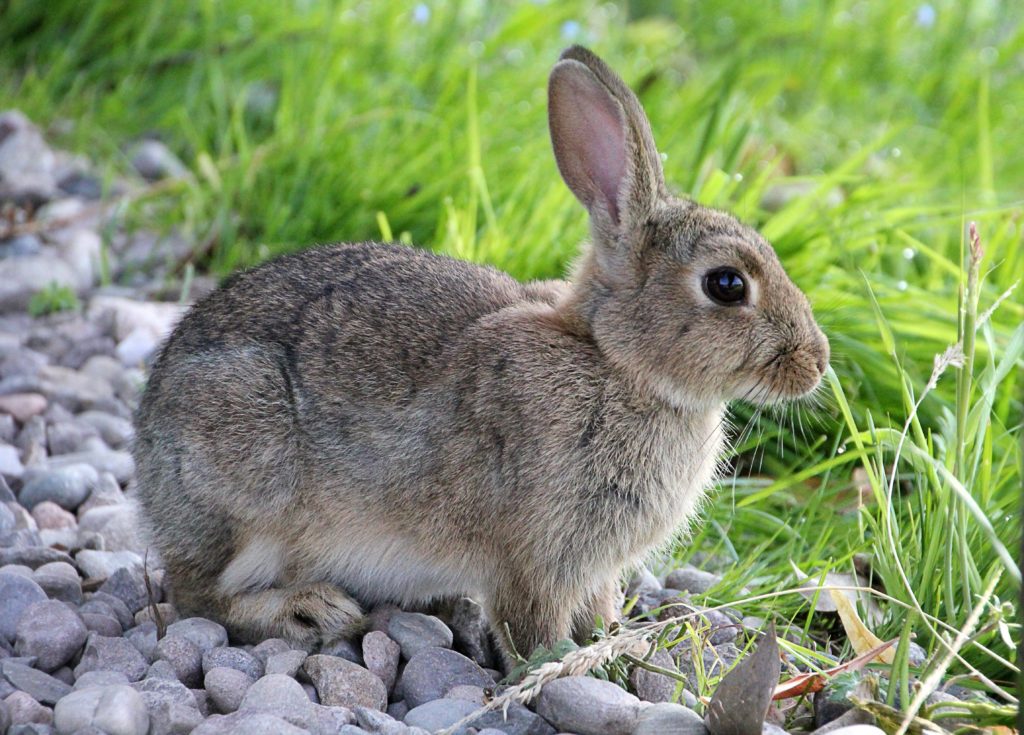
Appalachian Cottontail Rabbit, Sylvilagus obscurus, which closely resembles the Eastern Cottontail (Greg Montani / Pixabay; PD)
The Appalachian Cottontail Rabbit is endemic to the Appalachian Mountains of the eastern U.S. It inhabits dense forests, brushy areas, and mountainous terrain throughout its range, which spans from southern New York to northern Alabama. They measure 14 to 17 inches (36–43 cm) long and weigh 1.5 to 3 pounds (0.7 –1.4 kg). Their appearance is similar to the Eastern Cottontail but tends to have a darker and more subdued fur coloration often with a grayer tone. They prefer dense cover and often use fallen logs and brush piles for shelter. Considered relatively uncommon compared to other rabbit species, they face threats such as habitat loss and fragmentation. Conservation efforts are underway to safeguard populations and preserve their unique mountain habitat.
New England Cottontail Rabbit, Sylvilagus transitionalis
The New England Cottontail is 15 to 17 inches (38 to 43 centimeters) long and weighs 2 to 3 pounds (0.9–1.4 kg). Its fur is usually a mix of brown and gray, with a reddish-brown tint on its back and sides, and the ears have black rims. The belly and throat tend to be lighter in color, often a creamy white or light gray. This subtle variation in coloration aids in camouflage among leaf litter and understory vegetation. Like other cottontails, it has a distinctive fluffy white tail; it’s usually less conspicuous than the tail of the Eastern Cottontail, with which it shares some territory.
It prefers dense undergrowth for cover and nesting in shrublands and young forests. Its range historically extended throughout parts of New England, but habitat loss and fragmentation have led to a significant decline. Ongoing captive-breeding efforts in some states are helping to increase their population.
Mountain Cottontail Rabbit (Nuttall’s Cottontail), Sylvilagus nuttallii
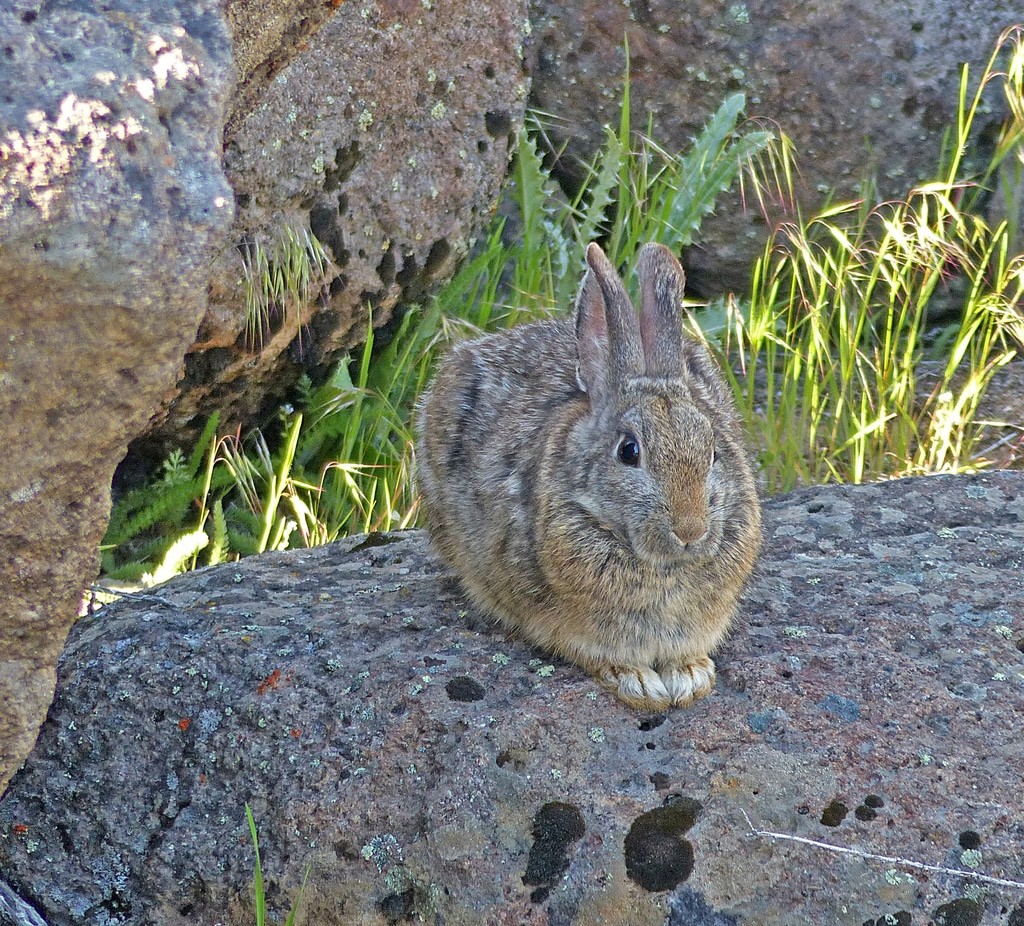
Mountain Cottontail, aka Nuttell’s Cottontail, Sylvilagus nuttallii (Mark Nikas / iNaturalist; CC BY-NC 3.0)
Also known as Nuttall’s Cottontail, this rabbit is native to the mountainous regions of western N.A., including the Rocky Mountains and the Sierra Nevada. It inhabits forests, shrublands, and alpine meadows, typically at elevations ranging from 5,000 to 10,000 feet (1,500–3,000 m). It’s 15 to 20 inches (38–51 cm) long, to 3.5 pounds (0.9–1.6 kg), and has grayish-brown fur and lighter underparts. Also, a fluffy cottony tail. It seeks protection from predators and harsh weather in rocky crevices and burrows. While not as common as some other rabbit species, the Mountain Cottontail maintains stable populations within its range.
Pygmy Rabbit, Brachylagus idahoensis
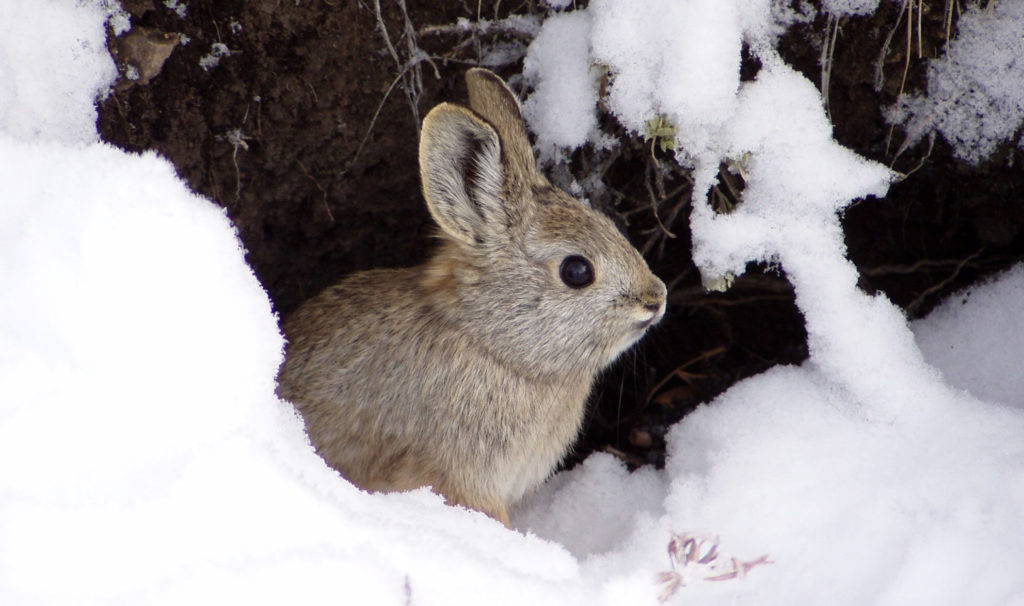
Pygmy Rabbit, Brachylagus idahoensis (H. Ulmschneider and R. Dixon, USFWS-Idaho Fish & Game; CC BY-NC 2.0)
The Pygmy Rabbit isn’t a cottontail. In the genus Brachylagus, it’s the smallest rabbit in the world. Adults are tiny enough to sit in your hand—only 9 to 11.5 inches long and .0.827 to 1.102 pounds (375–500 gms). They have a robust build with short legs and rounded ears. Their fur is typically grayish-brown, helping them to blend well in their environment, and they lack the distinctive white tail common to other rabbit species. They live in the U.S. West, in dense sagebrush areas with deep soil of the U.S. West. Their population is dropping due to habitat loss, inbreeding, and disease. Some states are now conducting captive breeding programs to try to save them. They nest in burrows and are the only N.A. rabbits that will dig their own.
Black-tailed Jackrabbit, Lepus californicus
One of three large hares belonging to the genus Lepus, they weigh up to seven pounds (3.2 kg). As a comparison, even the largest cottontails weigh no more than 4.4 lb (2,000 g). They have enormous ears, which range from 4 to 7 inches (10–18 cm) long. Their fur is generally a mix of gray and brown, providing effective camouflage. What distinguishes it is its namesake feature: a black stripe on the upper surface of the tail, contrasting with a lighter underside. They inhabit much of the western half of the U.S. and south into Mexico, favoring desert scrublands, prairies, farmlands, and dunes. They also live in cities where there’s suitable habitat. Normally, they rest in shallow depressions by day and forage at night.
They can bound 20 feet (6.1 m) forward and run at sustained speeds of 30+ miles per hour (48 kph) in a zigzag pattern. Interestingly, these hares obtain nearly all the moisture they need from their food plants by fully digesting them twice. Their babies are born with hair, and their eyes are open, unlike rabbits, which are hairless and with closed eyes.
Snowshoe Hare, Lepus americanus
The Snowshoe Hare is primarily found in the boreal and mountainous regions of Canada and the northern U.S. It’s well-adapted to its cold, snowy habitat with large, furry feet that act as snowshoes across deep snow. It measures 15 to 20 inches (38–51 cm) in length and weighs 2 to 4 pounds (0.9–1.8 kg). It transitions from reddish-brown in the summer to a snowy white coat in the winter. The Snowshoe Hare and Canada Lynx, a primary predator, are examples of how a predator-prey relationship influences species populations. For reasons that aren’t clear, the hare population drops substantially about every ten years. As a consequence, the lynx population drops, too. When the hare eventually rebounds, so does the lynx.
White-tailed Jackrabbit, Lepus townsendii
The White-tailed Jackrabbit is around 18 to 25 inches (45–64 cm) in length and weighs 3 to 7 pounds (1.4–3.2 kg), making it one of the largest hares in N.A. It’s found in the western U.S., including the Great Plains, the Rocky Mountains, and parts of Canada. Grasslands, prairies, and shrublands are its habitats, where it can use its remarkable speed and agility to evade predators. Its fur is generally a mix of brown and gray, with a lighter underside, and the tail is white. Its strong hind legs enable it to leap 10 feet (3 m) or more in a single bound, which aids in escaping from predators. The coat of those living in the colder parts of its range turns all-white with dark ears in the winter.
Antelope Jackrabbit, Lepus alleni
The Antelope Jackrabbit is an intriguing species native to the southwestern U.S. and northern Mexico that lives in arid and semi-arid habitats such as desert scrublands, grasslands, and chaparral. It’s 20 to 24 inches (51–61 cm) long and weighs 3.5 to 6 pounds (1.6–2.7 kg). It has sandy brown fur and a pale belly, the back is peppered with black. There’s orange on the neck and chest. They can run to 40 miles per hour (64 kmh) to evade predators. Despite adaptability and agility, they’re not immune to the harsh realities of habitat loss, fragmentation, and over-hunting.
American Pika, Ochotona princeps
The American Pika (PIE-kuh) isn’t a cottontail. It’s one of thirty species of small mammals in the same order as rabbits and hares but belonging to a different family, Ochotonidae. They have a round body with short legs and rounded ears. Their fur is dense and soft, usually grayish-brown in color, providing insulation against the cold temperatures of their alpine habitats. American Pikas have a distinctive “haystack” behavior, meaning that they gather vegetation to dry and store for winter consumption. Native to N.A. and Eurasia, they’re known for emitting a whistling alarm call as they dive into burrows.
Cool, moist climates of mountains above the tree line but near meadows, is where they can be found. Climate change is driving them higher, though, and eventually, there may be no place left for them. They live in colonies and call out alerts when predators, such as weasels, hawks, and coyotes, are near. Over the winter, they eat from a large stockpile of dried wildflowers and grasses they gathered in the summer.

A view of American Pika habitat, taken from Flattop Mountain in Rocky Mountain National Park. (Miguel Vieira / Flickr; CC BY 2.0)
Collared Pika, Ochotona collaris
This small rabbit isn’t a cottontail. It belongs to the Ochotonidae family and is found in the mountainous regions of Alaska and parts of western Canada. It’s only 6 to 9 inches (15–23 cm) long and weighs 4 to 6 ounces (113–170 gm). Its body is round, with short legs, rounded ears, and a short tail. Its fur is dense and soft, usually grayish-brown in color, with a white fur collar around its neck. Highly adapted to its rocky mountain environment, it constructs “haystacks” of vegetation to store food for the winter months. Habitat loss and climate change are threats to its populations, making conservation efforts crucial.

